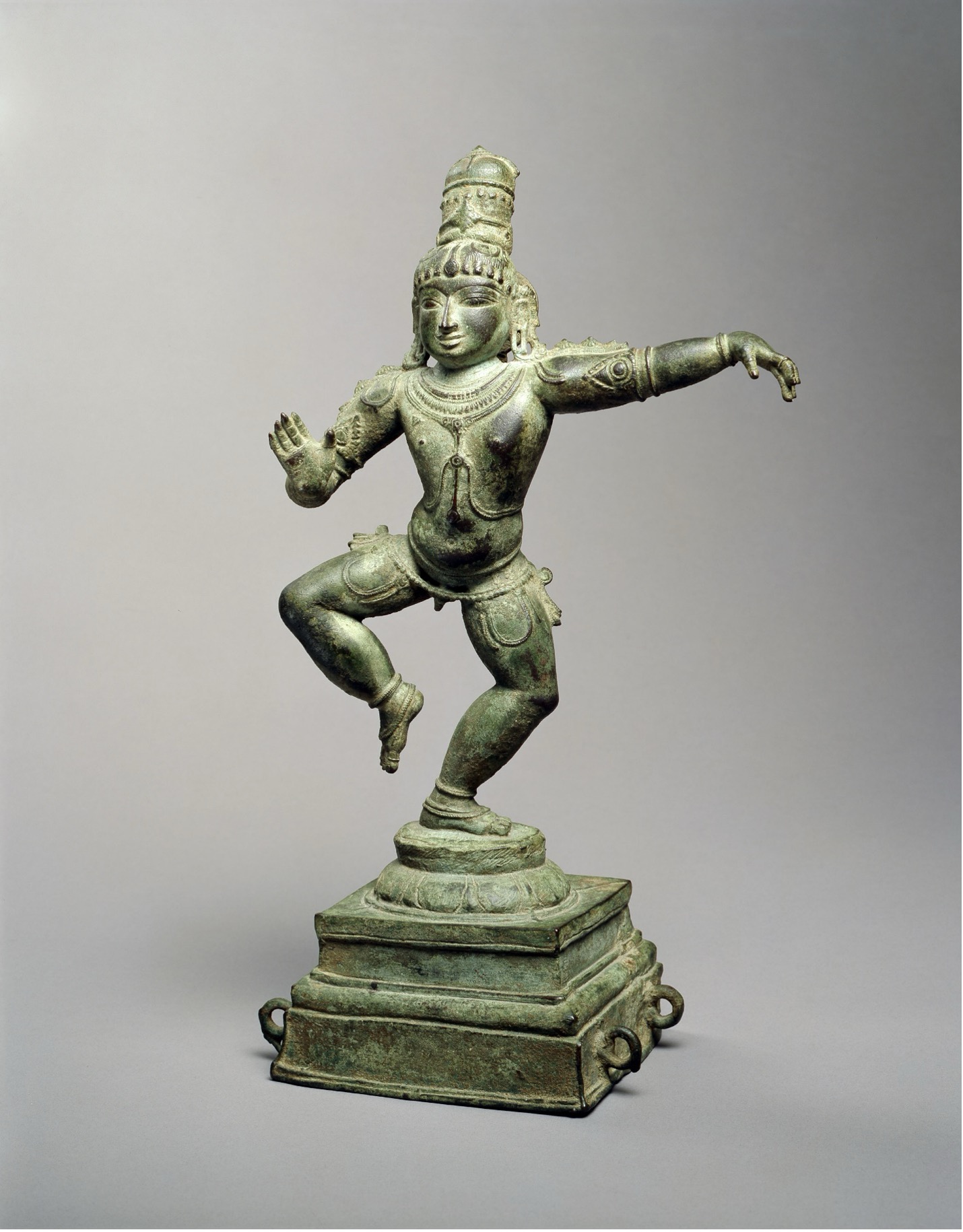
When writing an object’s provenance statement, I try to strike a balance between comprehensiveness and succinctness. Information is presented chronologically, from oldest to most recent, and how an object came to pass from one owner or dealer to another is indicated when known. For many reasons, it is not always feasible to find corroborating evidence to support or refute provenance information attached to an object. I still want to present this information though, and provenance researchers have specific words we use in just such a situation. “Possibly” and “probably” are used to denote information that is suggested by known evidence but cannot or has not been definitively proven to be true. Sometimes a story has been attached to an object through word of mouth with no known supporting evidence—this is where “said to be” comes into play.
In 2022, Emory University senior Sojourner Hunt was finishing her honors thesis on the Carlos Museum’s bronze sculpture of a dancing Balakrishna (2001.1.3). As part of her thesis, Sojourner researched the object’s provenance under my supervision. We knew for certain the sculpture had been purchased for the Carlos from Sotheby’s New York’s Indian and Southeast Asian Art sale on September 22, 2000, as lot 148. According to the Sotheby’s catalogue, the object was part of the Belmont Collection, Switzerland and had been exhibited twice in Germany in 1966. Sojourner identified the Belmont Collection as the art collection of Basel doctor Josef Belmont (1886-1981), a documented collector of Indian sculpture. Belmont had lent works to a German traveling exhibition in 1966 – Indische Kunst. The provenance presented in Sotheby’s 2000 catalogue made sense, but we still had to verify the details.
When Sojourner located the Indische Kunst exhibition catalogue, Belmont had indeed lent several bronze Balakrishnas to the exhibition. All the objects in the catalogue had a written description with dimensions, and some were accompanied by photographs. None of the Balakrishnas photographed in the catalogue matched the Carlos sculpture. When looking at the written descriptions, some could fit the Carlos Balakrishna but none of the dimensions matched our sculpture. However, the written descriptions were short and sometimes vague. Measurements can be wrong. Without photographs of every Balakrishna lent by Belmont to Indische Kunst in 1966, we could not definitively confirm or deny the Carlos Balakrishna had been in the exhibition. With the link to the Indische Kunst exhibition in question, we then had to question if the object came from the Belmont collection in the first place. We contacted Sotheby’s, but they were not able to provide any more details.
While there are doubts about the provenance provided by the auction house, this provenance story has been attached to the Carlos Balakrishna. True or not, it is now part of the object’s history. Since the story cannot be discounted based on the known evidence, it is important to keep Belmont and the 1966 German exhibition in the object’s provenance until we can prove or disprove it. Consequently, when you look up the Carlos Balakrishna online, you will see the provenance written as “Said to be ex coll. Dr. Josef R. Belmont (1886-1981), Basel, Switzerland.”




